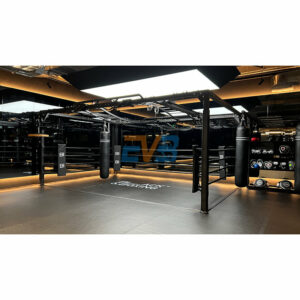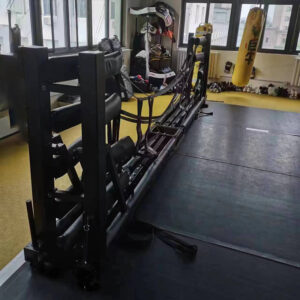Boksringen zijn er in verschillende vormen, maten en materialen, en de juiste kiezen kan een groot verschil maken in uw training, prestaties en veiligheid. Of u nu een professionele bokser, een beginner of een fitnessfanaat bent, hier zijn enkele tips over hoe u de juiste boksring kiest voor uw behoeften.
Hangt af van het gebruiksscenario van uw ring
Als je ring wordt gebruikt bij internationale of regionale wedstrijden, denk ik dat je een standaard nodig hebt wedstrijd boksring die qua veiligheid, stabiliteit en prestaties tot de top behoort.
Als u de juiste ring voor uw boksschool wilt kiezen, kies dan voor een professionele ring van hoge kwaliteit trainingsboksring is noodzakelijk om effectief en veilig te kunnen trainen. Als uw plafondhoogte niet hoog genoeg is, dan is een vloer boksring is ook een goede optie.
Als je andere oefeningen in je sportschool hebt en de ring alleen voor bepaalde tijdsperioden wilt gebruiken, raad ik je ten zeerste aan om opvouwbare boksring, die zeer eenvoudig op te bergen is en weinig ruimte inneemt wanneer opgevouwen, beschadigt het de vloer niet.
Houd rekening met de grootte
De grootte van de boksring hangt af van de beschikbare ruimte en het type training dat u gaat doen. Professionele boksringen zijn bijvoorbeeld meestal 20 voet in het vierkant, terwijl amateur- en trainingsringen kleiner kunnen zijn. Als u thuis traint, zorg er dan voor dat de ring comfortabel in uw garage, kelder of sportschool past.
Kies het juiste materiaal
Boksringen kunnen van verschillende materialen worden gemaakt, zoals canvas, vinyl of schuim. Canvas is het meest traditionele en duurzame materiaal, maar vinyl is gemakkelijker schoon te maken en te onderhouden. Schuimringen zijn softer en veiliger, maar bieden mogelijk niet dezelfde weerstand als traditionele ringen.
Zoek naar kwaliteitsconstructie
Een hoogwaardige boksring moet stevige hoekpalen, sterke touwen en een solide frame hebben. Zorg ervoor dat de palen stevig aan de vloer zijn bevestigd en dat de touwen correct zijn gespannen. Vermijd lichte of slappe ringen die gemakkelijk kunnen wiebelen, doorzakken of breken.
Denk aan de opvulling
De vulling van de boksring kan van invloed zijn op uw veiligheid en comfort. Zoek een ring met voldoende vulling die demping biedt voor uw voeten, knieën en handen. De vulling moet gelijkmatig zijn en niet hobbelig of dun op bepaalde plekken.
Controleer het draagvermogen
Zorg ervoor dat de boksring jouw gewicht kan dragen, evenals het gewicht van je tegenstander en alle apparatuur die je gebruikt. Een standaardring moet ten minste 2000 pond kunnen dragen, maar als je een zwaargewicht bokser bent, heb je misschien een sterkere ring nodig.
Denk aan de kosten
Boksringen kunnen variëren van een paar honderd tot enkele duizenden dollars, afhankelijk van de grootte, het materiaal, de constructie en de functies. Kies een ring die binnen uw budget past zonder in te leveren op kwaliteit, veiligheid of comfort.
Door deze factoren te overwegen, kunt u de juiste boksring kiezen die aan uw behoeften voldoet en u helpt uw trainingsdoelen te bereiken. Of u nu spart, schaduwbokst of aan uw voetenwerk werkt, een goede boksring kan uw vaardigheden verbeteren en u het vertrouwen geven om optimaal te presteren.


